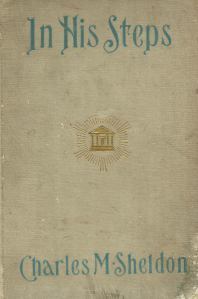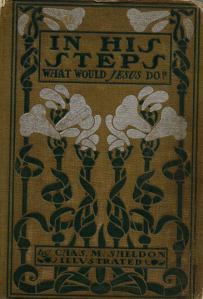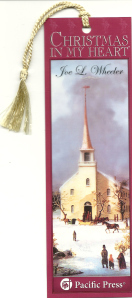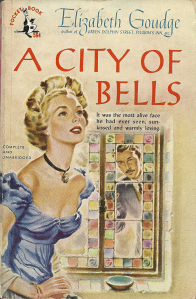Joe L. Wheeler's Blog, page 17
October 10, 2012
A DAY-BRIGHTENER IN THE MAIL
BLOG #41, SERIES #3
WEDNESDAYS WITH DR. JOE
A DAY-BRIGHTENER IN THE MAIL
October 10, 2012
[First of all, an apology: inadvertently the wrong date was attached to last week’s blog, “Christmas In My Heart® turns 21"; the release date was October 3, not September 26.]
* * * * *
Yes, strange as it may seem, personal letters still exist! Indeed, an unexpected thing has taken place in this digital age: the once lowly personal letter has become a prestige item, and the handwritten letter the most valuable artifact of all! You see, all this ubiquitous electronic gadgetry, that was supposed to bring us together, instead separates us to the extent that one-on-one personal conversation has become an endangered species. Meanwhile, the ability to articulate well on paper continues to degenerate—and along the way, cursive writing is so rarely taught that many children cannot even read it!
So it was a day-brightener indeed when I received this letter from one of our faithful blog and tweet readers, Michelle Swanson of Missouri. Here is how it read:
September 30, 2012
Dr. Wheeler,
I want to respond to a statement in your August 22 blog (yes, I know it is a late response, I apologize): “The mere fact that no one jogged my memory about the omission makes me wonder how many of our readers are seriously into reading our selections.”
I noticed (as I am sure others did too) that you skipped a selection, but I was sure there was a good reason. Your blogs each week are excellent, and since they continued I assumed you were in good health and were just giving us a much needed chance to catch up. Several of the books you have recommended have led me to search out other writings by the same author, and once I get started I read all that I want, which leads me to often get behind in the readings.
Your Zane Grey selections introduced me to an author I had not previously read., I have so far read 6 of his books, and have several more listed that I want to read. My teenage son, and my husband have been reading these books as well, in fact they have been giving me reports on which of the Grey books they think I will like best. I just finished the book “Nevada” which I thoroughly enjoyed. The men in my family liked Robbers’ Roost better.
The August selection of Charles Sheldon’s In His Steps is outstanding. I had not previously read any of Sheldon’s writings. I have now read two additional Sheldon books: Miracle at Markham and Robert Hardy’s Seven Days. I found them interesting, thought provoking, and easy to read. Thank you for recommending this author.
The little break in Book of the Month selections this summer was fine. I don’t want you to get discouraged in thinking that no one is reading the books. I do read the books you recommend, and I look forward to each selection as if it were a special gift.
I am a wife, mother, work full time, and am back in school to finish my degree, which doesn’t leave me with a lot of pleasure reading time. As a family we don’t watch a lot of television, so we often read as entertainment. It is nice to have you recommend the books, and then provide an excellent introduction for each book chosen.
I enjoy your post of quotes on Facebook. I should probably respond more to those posts, but I just haven’t taken the time to do so. I will try to be more responsive in the future.
I was pleased to learn that your home escaped damage from the terrible fires. Enjoy the beautiful autumn weather.
May God bless and keep you.
Michelle Swanson
* * *
[And may God bless Michelle for taking the time out of her hectic schedule to weigh in on our Book of the Month blogs and daily quotation tweets.]


October 3, 2012
CHRISTMAS IN MY HEART TURNS 21
BLOG #40, SERIES #3
WEDNESDAYS WITH DR. JOE
CHRISTMAS IN MY HEART® TURNS 21
September 26, 2012
It has arrived. As I sit in my writing rocker, on my lapboard is the reality that for so long has been so much less: first Christmas stories I read and re-read, wrote their titles down in Draft #1, discarded some and substituted others for Draft #2, repeated the process for Draft #3, again for Draft #4, kept discarding other stories that all but demanded to be included that ended up in Draft #5, repeated the process in Draft #6, began feeling better about the collection in Draft #7, better yet with those in Draft #8, almost got there with Draft #9, and only with Draft #10 did I prayerfully conclude that God was pleased with that menu of stories.
Once decided on, I began playing with the order. It is at this stage that I’ve sometimes concluded, for one reason or another, that one story had to go. Sometimes because two stories were too much alike or one of them just didn’t stand up to the competition. Always in the back of my mind is the vow I made to God many years ago: Lord, if any future collection of Christmas stories is less powerful than those that went before, give me the guts to hang it up right there, because I must never, never, never coast!
But this collection stood up under such a re-reading. So which one should be placed in the lead position? A crucial question, for if the lead story fails to suck readers into it, then we risk losing them completely. There were a number that competed for that position in my mind, most notably, Isobel Stewart’s “Christmas in the Heart” —no wonder she loved the series! What jubilation reigned in her house in Helderberg, South Africa when Pacific Press’s Karen Pearson hand-delivered the newest collection to her a year ago. But this year, her story faced tough competition with that battle-hardened veteran, Temple Bailey. I’d just recently stumbled on her wondrous love story titled “The Christmas Quest,” and it just plain dug in its heels and tantrummed its path to the lead position. So I then positioned Stewart’s story next to my own at the end. Always I try to feature one of our strongest stories in that position. Sadly, not long after I sent the manuscript in, Isobel’s husband e-mailed me that the love of his life had passed away. Never in this world would she get to light up with the arrival of another Christmas in My Heart® collection carrying one of her magical stories—often Christmas love stories (a genre our readers treasure above all others!).
Once those two positions were decided, I began wrestling with organizing the rest of them. There is always a rhythm to their appearance: Don’t position two long stories together, but separate them by shorter ones; ditto short ones; normally, I don’t position two tear-jerkers sequentially; don’t place the most powerful ones at the front, the middle, or the end; above all, don’t leave the weaker (of course we try our best to have no weaker ones!) for the end of the book, for the stories ought to reach a crescendo that culminates with my own story. A real challenge, believe me! Especially this year when I made such a departure from my norm and turned to a non-fiction account of the most memorable Christmas of my lifetime. Six of the fifteen finalists turned out to be love stories.
Two stories, Pierre van Paassen’s “Uncle Kees’ Christmas Rebellion” and Willemm Brandt’s “The Candle,” had been in the running for years and years, but each time failed to make the final cut; but this time I felt God saying to me, Their turn has come: include them! Though short, each of them is a masterpiece.
One genre I have usually avoided—other than featuring my own—is the long Christmas story, reason being that to include two long ones in one book results in too few stories in the 128-page collection. But since my own story wasn’t as long as some this year, I was able to include Lucy Agnes Hancock’s unforgettable romance, “Christmas Gift,” one of the longest Christmas stories we’ve ever featured. I’ll be really surprised if it doesn’t do its best to run away with this collection.
I also make a point of featuring contemporary writers as well as time-proven ones; these add vibrancy and uptodatedness to a given collection; this year, making that tenth cut were Virginia A. Johnson’s “Ornament of Grace,” Harriet LaBarre’s “The Magic Key,” Katharine Swartz’s “Star of Hope,” and Jill Hoefler’s “The Empty Box.” Johnson writes from Crabtree, Oregon; LaBarre (96 years old and still writing!) from Sag Harbor, New York; Katharine Swartz from St. Bees Vicarage in Cumbria, England; and Hoefler from Firth, Nebraska.
The oldest story in the collection, first published in 1891, Ella F. Mosby’s “The Christmas Inn,” is set way back in 1465 England.
Then there are other ever so special authors we’ve never featured before: Lola Lamorreaux, Lawrence York, and Leslie Peters. It is always a joy to bring back to life from the very edge of extinction authors whose work deserves to live on!
And I must not forget the bookmark! I just spoke two days ago to Doug Church, Pacific Press’s Vice President of Marketing, who confided in me that he and his marketing team have concluded that one key reason why last year’s collection, Christmas in My Heart® 20, sold out of its first-printing before Christmas was the stunningly beautiful bookmark that was given to each purchaser of the collection. A Barnes & Noble manager told me, “Joe, that bookmark is as beautiful as any of those we sell for $5 each!” The bookmark was taken from the center of the Currier & Ives-ish cover crafted by Steve Lanto. And some people coveted the bookmark so much they bought the book just to get it! So, on this basis, Church told me, they did the same for Christmas in My Heart 21. And he sighed, “Do you have any idea how long it takes for our entire staff to hand-tie all those thousands of tassels? It takes everyone, beginning with the front-desk receptionist, to tie them!” Isn’t that uniquely special? A hand-tied artifact in this age of mass market digitalization!
You can order your copy (copies) from us at P.O. Box 1246, Conifer, CO 80433. $13.99 each, plus shipping. Or go to our web page and send us an email through the web page: www.joewheelerbooks.com. Or send directly to our email: mountainauthor@gmail.com. Let us know if you want your books to be personally inscribed.
May you and yours enjoy a blessed Christmas season!


September 26, 2012
DR. JOE’S BOOK OF THE MONTH CLUB
BLOG #39, SERIES #3
WEDNESDAYS WITH DR. JOE
DR. JOE’S BOOK OF THE MONTH CLUB #13
ELIZABETH GOUDGE’S CITY OF BELLS
September 26, 2012
1948 Pocket Book copy of City of Bells
Those of you who love our Christmas in My Heart® stories may remember my recent story, “Message in a Book,” in Christmas in My Heart 20. In it I referenced a passage from Goudge’s City of Bells:
“‘A bookseller,’ said Grandfather, ‘is the link between mind and mind, the feeder of the hungry, very often the binder up of wounds. There he sits, your bookseller, surrounded by a thousand minds all done up neatly in cardboard cases; beautiful minds, courageous minds, strong minds, wise minds, all sorts and conditions. And there come into him other minds, hungry for beauty, for knowledge, for truth, for love, and to the best of his ability he satisfies them all. . . . Yes . . . it’s a great vocation” (City of Bells, p. 95).
* * *
For several evenings running, I’ve been wrestling with a decision: which book should I choose to anchor our second dozen Books of the Month? I’ve been in a reverie, induced by the haunting sight of falling aspen leaves in trees that have once again transformed Conifer Mountain into one heartbreakingly beautiful glow. Made doubly so by the realization that in only days the aspens will stand naked, stripped of their glory, not to be clothed again until spring. As a result, the book decision was colored by my autumnal mood, tinged with the poignant thought, Who that I love may not live to see autumn leaves fall again? Might even I not be there to see them fall?
So the chosen book had to match my mood. Finally, it came down to one author, Elizabeth Goudge, the Christian British writer (1900-1984) who, over the years, has become an integral part of my spiritual and philosophic DNA.
She wrote so few books that it almost broke my heart to read the last of them. Now I can only re-drink at her wells of insight into this thing we call life. She wrote so few because she poured everything in her into each one. It is impossible to merely breeze through a Goudge book, reason being: she’s not just a “good read,” she’s a “great read.” She had to have agonized over each and every sentence before she’d signed off on it with her publisher. So I find myself savoring them more each time I come back to a given book.
And her fictional children! I don’t know how she did it—for I certainly can’t!—, how she somehow retained, as an adult, the incredible gift of still being able to think as a child, to reason as a child, to love as a child.
And it was so difficult for me to choose just one of her romances–treasure chests such as The Dean’s Watch, Green Dolphin Street, Pilgrim’s Inn, Rosemary Tree, The Scent of Water, Towers in the Mist, etc. In the end, however, the one that best matched my mood was City of Bells, for as I read it I could hear and see the bells of Canterbury Cathedral that helped give birth to my Christmas love story, “Evensong.”
After reading City of Bells in March of 1991, I wrote, “I do believe this one is Goudge’s greatest book.” I’ll be most interested in your response to it. I’ll be exceedingly surprised if you don’t immediately become another Goudgeaholic and track down every Goudge book you can lay your hands on!
In America, Goudge was published by Coward-McCann; City of Bells in 1937, Crowell-Collier in 1947, and Pocket Book in 1948. Keep in mind that sometimes the American editions feature alternative titles from the original British editions.
Happy hunting!


September 19, 2012
AN UPDATE ON OUR UPCOMING BOOKS
BLOG #38, SERIES #3
WEDNESDAYS WITH DR. JOE
AN UPDATE ON OUR UPCOMING BOOKS
September 19, 2012
We have been receiving so many queries having to do with whether or not we have any new books coming out during the coming months that I am writing this explanatory blog.
We haven’t even updated our master listing since fall of 2011, reason being that we are in the process of updating everything about our website (it badly needs it!).
The reality is that after a number of years of coasting along with two series (the Christmas series and Animal series), book-related action has cranked up with a vengeance! As you’ll see when you look over the following list of books in the current pipeline:
(1) Christmas in My Heart 21 (now entering the third decade of its life). An advance copy just arrived at our house, and all who have seen it love it. We should have it in stock very soon. It is our 77th book.
(2) Stinky the Skunk and Other Strange and Wonderful Aninal Stories (#9 in “The Good Lord Made Them All” animal series) will be arriving mid to late December. It will be our 78th book.
We have contracted with eChristian for six story collections, each with twelve stories. They’ll be published first in electronic form, and second in paper. We have already completed the manuscripts for all six and sent them in. They will be published in this order, beginning quite soon:
(3) Showdown and Other Sports Stories for Boys. It will be our 79th book.
(4) A Bluegrass Girl and Other Horse Stories for Girls. It will be our 80th book.
(5) The Mother’s Face is the Child’s First Heaven and Other Motherhood Stories. It will be our 81st book.
(6) Only God Can Make a Dad and Other Fatherhood Stories. It will be our 82nd book.
(7) The Talleyman Ghost and Other Mystery Stories for Girls. It will be our 83rd book.
(8) Secret of the Desert and Other Mystery Stories for Boys. It will be our 84th book .
We have just completed a monumental book for Howard/Simon & Schuster, a companion book to my Lincoln biography (Abraham Lincoln: A Man of Faith and Courage, 2008). A hundred years of collecting (first, during my mother’s life; and second, throughout my own) has gone into searching out these elusive, little-known treasures from the past. We sent in the manuscript (with 32 stories about Lincoln, five introductory chapters written by me, and 37 vintage photographs or illustrations) during the last week. Nothing comparable has ever before been published.
(9) The Greatest Abraham Lincoln Civil War Stories Ever Written. It will be our 85th book.
A contract is being processed with Howard/Simon & Schuster for a collection readers have been urging me to put together for many years. It too is due to be released by fall of 2013.
(10) Actual title is not yet settled on, but it will feature the most beloved and moving Christmas love stories ever to come out under my own name [if it goes well, a second such collection may follow]. It will be our 86th book.
* * * * *
So now you can see why we have been so anchored to deadlines during the last year!
What an exciting publishing year the good Lord has granted to us!


September 12, 2012
BLOG #37, SERIES #3
WEDNESDAYS WITH DR. JOE
FIRES AND MIT...
BLOG #37, SERIES #3
WEDNESDAYS WITH DR. JOE
FIRES AND MITIGATION
September 12, 2012
A number of you were kind enough to call us when you heard about Colorado wildfires near us. It has been scary. Especially when we could see a ridge only five miles away, when winds 70 miles an hour were raging, and flames were shooting 200 feet high. One of my fellow Kiwanians lost everything in that fire.
Since that time all of us who live in mountain communities in our region have lived in fear that a wind-driven fire would come our way; for when that happens, all the slurry bombers and helicopters are grounded until the wind dies down.
At times like these you realize how fragile life and houses and possessions really are.
Another fear has to do with defensible space. Insurance company managers have sent out warning salvos to homeowners in mountain communities, declaring that not to provide buffers around homes might be grounds for losing insurance coverage.
So it has been that a number of family and friends, including our son Greg; our neighbor Mike Forth; Evan and Sheree Nudd; Charles and Nikyla, Nathaneal and Garrett Wilkes, have come to our rescue. Twelve large trees have been felled so far, and are in the process of being cut up.
It has been quite a sight to see mountain man Evan Nudd jockeying up to the top of towering pine trees and cutting them down in sections (where the trees are dangerously close to the house or power lines); when further away the rest of us tug at ropes to help guide the falling trees away from the house.
It hurts, especially when you love trees as much as we do. But on the positive side, it gives aspen a chance to grow, for lodgepole pine trees grow so fast they often shade the aspen to death, or acidify the ground so much that aspen can’t flourish.
How grateful we are that the days of circling wagons to protect family and friends are not yet over!
And we are so grateful!


September 5, 2012
The Last Flowers of Summer
BLOG #36, SERIES #3
WEDNESDAYS WITH DR. JOE
THE LAST FLOWERS OF SUMMER
September 5, 2012
When you live high in the Rockies as we do – at 9,700 feet –, summer is all too short. Plants are likely to freeze as late as June and as early as mid to late August.
Then there are the critters that consider anything planted outside the house to be their salad bar – principally elk, deer, squirrels, and chipmunks.
Since we’ve had bull elk wander onto our lower deck, that leaves but one place for flowers: the upper deck.
But even there, we’re not home free, for hailstorms can come at no notice. In fact, early this summer when we were out shopping, a hailstorm shredded our just-purchased flowering plants. Fierce winds are hard on them too. As are wandering raccoons and bears.
By now I can hear you muttering, So why are they crazy enough to invest in flowers at all? Are they not very smart?
Quite simply, we do it because we love flowers. I come from a long line of ancestors, on both sides of my family tree, who reveled in flowers, and plants in general. My late father was never happier than when working in his garden; my paternal grandmother, who was deaf, practically lived in her garden – it was a world she could retreat into; and my maternal grandfather was a florist who sold stock from his home.
So it is that when we’re home, if we hear thunder, we race for the plants and haul them in under the eaves before it’s too late. In the Rockies, storms often surprise us with their speed –many times we get soaked when we dilly-dally. And lightning strikes give little or no warning.
Thus it is that though our season is short, we splurge on buying flowering plants anyway, and each of those precious days in those allotted ten to twelve weeks, we treasure like misers fondling gold. Perhaps it is because we have so short a time that we value them so much.
And of course we have our favorites: geraniums and petunias always bloom their hearts out for us, and their beauty is so intensely vibrant that the very thought of the imminence of the arrival of that assassin, frost, sends chills up our spines!
But not yet. At least tomorrow the flowers will greet us when we go out to feed the birds, squirrels, and chipmunks.
As to why God gave us flowers in the first place, let’s listen to Emerson:
“THE RHODORA”
In May, when sea-winds pierce our solitudes,
I found the fresh Rhodora in the woods,
Spreading its leafless blooms in a damp nook,
To please the desert and the sluggish brook.
The purple petals, fallen in the pool,
Made the black water with their beauty gay;
Here might the red-bird come his plumes to cool,
And court the flower that cheapens his array.
Rhodora! If the sages ask thee why
This charm is wasted on the earth and sky,
Tell them, dear, that if eyes were made for seeing,
Then Beauty is its own excuse for being:
Why thou wert there, O rival of the rose!
I never thought to ask, I never knew:
But, in my simple ignorance, suppose
The self-same Power that brought me there brought you
* * * * *
Ah Yes! Beauty is its own excuse for being.


August 29, 2012
The London Olympics — A Retrospective
BLOG #35, SERIES #3
WEDNESDAYS WITH DR. JOE
THE LONDON OLYMPICS
A RETROSPECTIVE
August 29, 2012
What a show London threw for the world!
And that’s one thing London appears to do better than any other city in the world, unexcelled as they are in royal pageantry.
Every four years of our lives–barring world wars–, the world gathers for another Olympics. The Winter Olympics, since they disenfranchise the Southern hemisphere countries, can never be truly global. In today’s electronic world, it would be almost unthinkable for any nation to do a no-show for a Summer Olympics for its very place among the family of nations is at stake; not to show up would represent a worldwide black eye. Indeed, these Olympics can truthfully be said to represent the most-watched spectacle on earth. Hence the sheer amount of money and effort expended for bragging rights for specific events.
Each Olympics of our lives gifts us with a new set of heroes and heroines. The coin of the realm is medals, with Gold equating the laurel wreaths of ancient times. One moment, an athlete is unknown; only seconds later, the athlete’s name and image is transmitted on every computer screen in the world. One moment, an athlete may be facing a minimum wage future; only seconds later, endorsements worth millions! No wonder they cry, when they have to settle for fourth place, for not to earn at least a Bronze is to be saddled with an achievement that doesn’t even make a blip on the media screen.
Especially is this true in the U.S., where, sadly, the only medal that appears to count is Gold. On talk shows, Silver and Bronze winners rarely are even approached for interviews. This is, of course, a far cry from the Olympic ideal: To be honored for the effort represented by the achievement of edging out their competitors in their native countries–and thus earning the right to show up in the quadrennial Olympic parade of nations. Tragically, this U.S. led perception that only Gold counts has seeped into the global Zeitgeist and distorted it as well.
The Olympics creates its own royalty. In this respect, case in point is Ethiopia’s most famous runner. So idolized is she that in her home nation she has achieved such a level of idolatry that she is treated as though she were empress of that former monarchy.
The same is true with the so-called “fastest man on earth,” Usain Bolt of Jamaica. Yet even he had to re-earn this status, beating out an up-and-coming Jamaican who had defeated Bolt in Jamaican pre-trials, proving that past laurels are ephemeral at best: lasting only until someone else comes along who proves better, stronger, or faster.
Or if further proof of fame’s short shelf life were needed, we’d need look no further than Michael Phelps, the Superman of swimming. Even though his supremacy in prior Olympics had seemed absolute, he came into the London Olympics under a cloud of doubt, which early meets did little to dispel as in several cases he failed to medal at all. The big question had to do with whether archrival Ryan Lochte might supplant him. But then Phelps awoke, and the lion roared once again, and he finished his astounding Olympic career with 22 medals, 18 Gold, making him perhaps the greatest Olympian ever. At least for now. Next Olympics, in Rio, it will be someone else’s opportunity to shine and inevitably Phelps’ medals will lose their luster. As Robert Frost famously put it in his poem by the same name, “Nothing Gold Can Stay.”
Prior to the Olympics, all around the world, in each nation, as Olympic tryouts took place, those who excelled became locally famous, high hopes held out for the best of them. This local fame crescendoed as each team was sent off to London. In some cases, this early fame proved to be justified; in the majority of cases, it would not, and that early fame wouldn’t even last long enough to accompany the athlete back home.
We couldn’t help but note this phenomenon in the case of our state’s Wunderkind, Missy Franklin, temporarily lauded nationally, lauded as well in Colorado. In her case, however, the hype proved to be justified for she went on to win five medals (five Gold and two World Records). More significantly than that, however, she emerged from the games as America’s new sweetheart, her infectious joie de vivre lighting up every room and venue she entered; and not coincidentally energizing every team meet she participated in. Just as significant, if not more so, had to do with her parents’ determination to value their daughter’s right to a normal growing up over the siren call of professional sports and the money it could shower upon her if she’d just renounce normal girlhood in favor of becoming a cog in professional sports’ straightjacketing and mass-produced squirrel cages, akin to the State-run sports programs operated by medal factories such as China and Russia, in which the athlete’s parents are provided few opportunities to interact with their children.
Nor should we forget the way the so-called “Flying Squirrel” Gabby Douglas, captured the adoration of every little girl in the United States.
A serendipity had to do with the sight of the world’s most iconic couple, William and Kate, reveling in the sights and sounds of the games like any other couples sitting in the stands.
These, of course, are but a few of this year’s crop of Olympians who capture–at least temporarily–hearts all around the world.
See you in Rio!


August 22, 2012
Dr. Joe’s Book of the Month Club — Charles Sheldon’s “In His Steps”
BLOG #34, SERIES #3
WEDNESDAYS WITH DR. JOE
DR. JOE’S BOOK OF THE MONTH CLUB
CHARLES SHELDON’S IN HIS STEPS
August 22, 2012
Somehow this summer has just galloped away from me! So much so that I forgot July’s Book of the Month, and all but forgot August’s as well. The mere fact that no one jogged my memory about the omission makes me wonder how many of our readers are seriously into reading our selections. So belatedly, here is September’s selection.
“For hereunto were ye called: because Christ also
suffered for you, leaving you an example, that ye
should follow his steps.”
1 Peter 2:21

1897 Edition
In 1889, a young minister named Charles M. Sheldon founded the Central Congregational Church of Topeka, Kansas. Profoundly convicted that it was long past time for Christians everywhere to forsake their doctrinal warfare against each other and instead—really study Christ’s example while on this earth: in short, our Lord’s example of humble selfless service for others. The 1890′s produced a veritable explosion of interest in Christ’s Didoche (one is saved, not by doctrine or creed, but by loving God with all one’s heart, soul, and mind, and unconditionally loving and serving one’s neighbor)—and, of course, by the Cross.

1899 Edition
Sheldon couldn’t help but notice that Story was about the only thing that caused his parishioners to be faithful in their attendance, so he began packaging his Social Gospel sermons in story serializations. Presto! Church attendance swelled. Each chapter would conclude with a fictional cliffhanger of sorts—so people naturally had to show up for the next installment. The core of the story had to do with the question, What would Jesus do? were He faced with the same circumstances and decisions the parishioners were.
As Sheldon read his story to his congregation, a religious weekly of Topeka published it serially, gathering the chapters together in a paper-bound book in 1897. Within two years In His Steps went through five editions. In 1899, ten different publishers, finding a flaw in Sheldon’s copyright, and disregarding the central premise of the book, What would Jesus do?, unleashed a veritable torrent of new editions, not paying its author a dime. It was then pirated overseas as well. But one good thing resulted from all this chicanery: it became one of the best-selling books of all time. 115 years later, it is still selling.

1900 Edition
If you have not yet read it, now is the time! Do let me know what you think of it.
Sources:
Hart, James D., The Popular Book (Berkeley: University of California Press, 1963).
Mott, Frank Luther, Golden Multitudes (New York: The Macmillan Company, 1947).


August 15, 2012
I Have Seen Tomorrow! Part Three
BLOG #33, SERIES #3
WEDNESDAYS WITH DR. JOE
I HAVE SEEN TOMORROW!
Part Three
August 15, 2012
So, building on the last two blogs, where do all these wondrous technological breakthroughs leave all of us lesser lights? Is it lights out for us?
It’s anything but.
It’s all shades of Chris Anderson’s landmark book, The Long Tail (Hyperion, 2006). If you haven’t yet read a copy, grab one, for it prophesies the tomorrow Terry Bolinger and I just experienced.
The era dominated by mega bestsellers, mega TV ratings, mega music, mega films, etc – is not gone, but it has more than peaked. In its place is the world of The Long Tail. Anderson famously predicted six years ago that the world-wide-web was accelerating the demise of dominant anything. In other words, think of a large animal [perhaps a rat] with a long tail, representing say 2% of its body height. When sales shrank to 2% in that ancent world, it was curtains for those books—not any more!
Let’s back up a bit so Anderson’s premise will make more sense. Up until around 20 years ago, most books, for instance, that were salable at all, could be found somewhere. Bookstores were much more eclectic then: bestsellers, recent good-sellers, classics, and other books that stood the test of time, stayed in print as long as they sold a steady number. But then in roared the mega-everything. Publishers developed the constancy of a rabbit, with no loyalty to anything. As long as a given book or author was selling through the roof, the chain stores would sell it—sell it at cheaper prices than the smaller stores could. The big chain stores gobbled up the bestsellers that had been the life-blood of the lesser chain stores and stand-alones. Even the Christian chain stores. They have all but put them out of business. Just look at how many have closed their doors.
Now comes the Long Tail world. Borders is reeling, and Barnes and Noble is much weaker than it was—and they have been the nation’s dominant booksellers!
We used to be ruled by a world where publishers marketed their books and promoted their authors. They stored their books in big warehouses, from which they shipped out inventory, then accepted all those books back that didn’t sell quickly. Then came the digital age and the decline of print. Now publishers went broke sitting on unsold inventory.
So a new template is rising: print by demand. Terry and I were shown that world: Let’s say I’m a teacher [which happens to have been my career], now I can bypass an academic publishing house and put together my own books, go to a given printer, send it the digital manuscript and illustrations (b/w and color will be same price), then notify printer – I need 300 books by such a date – or 200, or 100, or 50, or 25, or 15, or 5, – or one! Presto! Those books will be printed and mailed to you in such a short time that it will boggle your mind. Price will shock you as well. What makes all this possible? No inventory gathering dust in warehouses. No publisher marketing.
And the Long Tail? As long as a book sells at all, it can stay alive. It no longer has to sell through the roof. Just sell. The book world, like everything else, has exploded into untold millions of small pieces, making possible a Brave New World where anyone, anywhere, can survive—as long as they’re satisfied with a small margin of profit per item.
In parting, I asked our guide about the future of print. He said, “Nothing’s going to destroy print, but more and more of it will be read digitally. But not to worry: books have been around for several thousand years, print for 600. In the future, the educated elite will pride themselves on gathering around themselves the best in printed books.” In other words, those who care enough to surround themselves with the printed bullion of the centuries will be tomorrow’s truly rich people. And you don’t have to have a lot of money to accumulate that kind of inner wealth.
That, my friends, is the new world of the Long Tail.


August 8, 2012
I Have Seen Tomorrow! Part Two
BLOG #32, SERIES #3
WEDNESDAYS WITH DR. JOE
I HAVE SEEN TOMORROW!
Part Two
August 8, 2012
As we know, an epiphany is a life-changing day. Looking backwards through time, we can pick out certain days that, had they not have been, our lives would have taken a different trajectory than was true with them. I strongly suspect that our tour through the great printing plant may prove to be one of them.
Our illustrious guide honed our sense of anticipation by hyping in almost every room we toured the piéce de résistance that awaited us at the end: something—we weren’t told what—that would radically change the publishing world.
But early on, we were ushered through the world we knew. What shocked us was our guide’s off-hand dismissal of them as being already passé. Examples: “This machine [huge, filling most of a very large room] was state of the art back in 2000” . . . . “This machine [yes it was built in Germany like so many of the finest and fastest printing machines] came out in 2003. Dated now” . . . . “This machine came out in 2005—revolutionary for its time” . . . . “This made real waves back in 2008″ . . . . This machine—oh it’s so 2010!” [as if it were already a dinosaur]. “This is one of our newest ones—2011—still the best of its kind.” And then: 2012.
After being plied with question about why 2012 was so significant in the history of printing, our guide pointed out that for over half a millennium—ever since Gutenberg—,speed has been the constant goal. If the fastest press known to man could run off 100 sheets in an hour, one that could do 200 represented a notable breakthrough. So there came a long line of ever-faster machines, machines that made obsolete everything slower that came before.
He showed us the current workhorse of the establishment: one they used for print-runs for 20,000 – 30,000 books at a time. They are so expensive to purchase and operate that they lose money on book-runs of fewer than 20,000 copies. I had a sudden flashback: hearing editors say, “Unless your book sells a minimum of 20,000 copies, we’re not interested in keeping it in print.” “So could this machine be the reason?” I asked our guide. “Bingo!” was the response.
But back to the break-through machine. Our guide informed us that throughout printing history lithography (dot-based printing) has had a finite limit—sort of like the old sound-barrier (many prophesied that no one would ever be able to fly faster than sound); but, as we all know, that threshold has long since been passed, so that today no one knows whether or not there is a limit to aeronautical speed.
Seeing the bemused look on our faces, our guide smiled and said, “Here’s the problem that has faced modern engineers for so long that many maintained we’d reached our printing speed ceiling. As the press spits out printed sheets at faster and faster speeds, you reach a point where the ink blurs, blobs (loses its distinctiveness), and you’re forced to back off. But companies—even nations, especially printing giants such as Germany and Japan—have for years been in an engineering race to see which one might accomplish the impossible: break the printing speed barrier.
And then we walked into another room—and there it was!. To the deep chagrin of Germany and Japan, Hewlett Packard’s engineers came up with the break-through. So America can yet triumph technologically over the rest of the world. Our guide tried to explain how, in layman’s terms, the miracle works: a different sequence of print color applications—I must confess, as being one of the world’s most technologically deprived thinkers, that I only vaguely understand why this one works and all the others don’t. All I know is that it does. And TerryBolinger and I were able to reverently touch one of fewer than a dozen such machines in the world.
Now, they say, using this breakthrough technology, press-runs may now speed up so fast, thanks to nanotechnology, that there appears to be no upper limits—opening up the probability that sooner than one might think, authors will be told that the next big machine will print so fast that only the works of best-selling authors selling in seven, eight, or nine figures will qualify.
So, does this mean all hope is gone for all of us lesser-lights? Is there no hope for the continuing existence of slower-selling but continuing-to-sell books that never go out of vogue?
We’ll get into that next Wednesday.


Joe L. Wheeler's Blog
- Joe L. Wheeler's profile
- 36 followers









